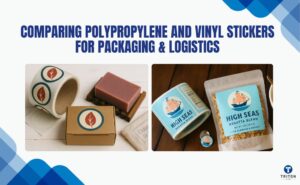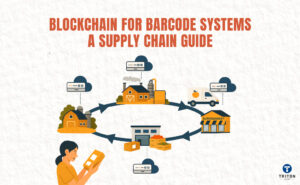Label designing and printing software helps design and print professional shipping labels. Look for software that:
- Integrates with your inventory or order management systems.
- Offers customisable templates for various label types.
- Can generate barcodes and QR codes.
- Is user-friendly and easy to navigate.
- Includes database connectivity for efficient data management.
- Is compatible with your label printer
- Provides reliable technical support and updates.
- Allows for scalable printing options.
Free label printing software can be a tempting choice, but it’s important to weigh its capabilities against your business needs. While these tools can handle basic tasks, they often fall short in advanced features like comprehensive database integration, intricate template customisation, and technical support. For businesses aiming for growth and efficiency, professional software solutions often provide a more robust, scalable, and reliable option, aligning better with long-term operational goals.
Seagull Scientific’s BarTender Software is a standout choice for professional and versatile label design and printing. Renowned for its broad range of specialised shipping label templates, BarTender caters to a variety of needs, including:
- Dana AIAG Supplier Barcode Shipping Label
- ASN Shipping Label
- GS1-128 Shipping Label with Global Location Number (GLN)
- Individual Carton Label
- Amazon Barcode Packing Slip QR Code
- Amazon Carton Label
- PIPO Carton Label
- MIL 129R Generic Cargo
- Manufacturing Shipping Label
- UPS LTL
- USPS Hold For Pickup
- USPS IMpb – Non-Standard Parcel
- USPS IMpb – Standard Parcel
- UPS Domestic
- UPS International
- USPS Barcoded Tray Label
- SPS Barcoded Sack Label
- USPS FIM A
- USPS FIM C
- USPS PMOD
Beyond this extensive range of templates, BarTender excels in barcode generation, offering over 400 preformatted components for more than 105 symbologies and numerous barcode standards. It also allows linkage to databases, significantly streamlining the label creation process. BarTender is renowned for its customisation capabilities and scalability, making it ideal for businesses of any size.
At Triton Store, we proudly offer BarTender software at competitive prices, providing an unmatched deal. We recognise that every organisation has unique needs, which is why we provide all four BarTender editions: Starter Edition, Professional Edition, Automation Edition and Enterprise Edition.
The Starter Edition is ideal for smaller teams, while the Professional Edition caters to those with more complex labelling requirements. The Automation Edition is the perfect choice for those seeking automation, and large organisations will find the Enterprise Edition tailored to their needs.
We also provide BarTender Cloud, the most up-to-date and user-friendly way to remotely manage label printing and design operations. Check out our BarTender Cloud vs BarTender software guide to compare the two BarTender versions.
At Triton, we are dedicated to providing top-tier software solutions. We are confident that BarTender Software will meet and exceed your expectations. Its flexibility, robust security features, and comprehensive support will elevate your labelling and inventory management processes, enhancing efficiency and effectiveness.
To discover how BarTender Software can revolutionise your label printing experience, connect with us through our live chat widget or fill out a form here. To explore the software’s capabilities in-depth, delve into our informative article: What is BarTender Software.






























